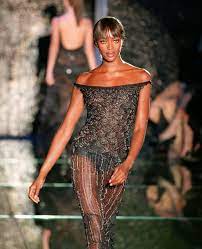The World of Modeling: A Glimpse into the Glamorous Industry
Modeling is an industry that captivates audiences worldwide with its beauty, style, and allure. From high-fashion runways to commercial advertisements, models play a crucial role in showcasing products, trends, and artistic visions. Let’s take a closer look at the fascinating world of modeling.
The Role of Models
Models are individuals who represent brands, designers, or concepts through their physical appearance and presence. They are not just faces but also embody the essence and message that a particular project or campaign aims to convey. Models come in various shapes, sizes, and ethnicities, reflecting the diversity and inclusivity of modern society.
Types of Modeling
There are several categories within the modeling industry, each requiring specific skills and attributes:
- Fashion Modeling: Fashion models showcase clothing and accessories on runways or in editorial shoots for magazines and designers.
- Commercial Modeling: Commercial models appear in advertisements for products ranging from cosmetics to household items.
- Fitness Modeling: Fitness models promote health and wellness through their physique and lifestyle choices.
- Glamour Modeling: Glamour models focus on sensuality and beauty in their work, often seen in men’s magazines or artistic projects.
The Glamour vs. Reality
While modeling is often associated with glitz and glamour, behind-the-scenes reality involves hard work, discipline, rejection, and competition. Models must maintain their physical appearance through diet, exercise, skincare routines, and professional grooming. They also navigate a highly competitive industry where success requires resilience, professionalism, and adaptability.
Diversity and Representation
In recent years, there has been a growing emphasis on diversity and representation within the modeling industry. Brands are increasingly embracing models of different ethnicities, body types, ages, genders, and abilities to reflect the true spectrum of beauty in society. This shift towards inclusivity has sparked conversations about authenticity and empowerment in fashion and advertising.
The Future of Modeling
As technology evolves and social media platforms continue to influence trends and consumer behavior, the landscape of modeling is constantly evolving. Influencer marketing, virtual fashion shows, sustainable practices, and body positivity movements are reshaping traditional notions of modeling. The future promises exciting opportunities for aspiring models to redefine standards of beauty while making meaningful contributions to society.
In conclusion, modeling is an art form that combines creativity, professionalism, diversity, and innovation to captivate audiences around the world. Whether strutting down a runway or gracing the pages of a magazine,models continue to inspire us with their grace,
5 Essential Tips for Building Effective Models
- Understand the purpose of the model before starting.
- Use high-quality data for training the model.
- Regularly evaluate and fine-tune the model for better performance.
- Consider the interpretability of the model results.
- Document your modeling process and decisions thoroughly.
Understand the purpose of the model before starting.
Before delving into a modeling project, it is essential to grasp the purpose of the model being created. Understanding the intended use and goals of the model beforehand allows for a more focused and effective approach to its development. By clarifying the objectives and desired outcomes, one can tailor the model to meet specific requirements, ensuring that it serves its intended function optimally. This proactive approach not only streamlines the modeling process but also enhances the overall quality and relevance of the final product.
Use high-quality data for training the model.
Using high-quality data for training the model is essential for achieving accurate and reliable results. The quality of the data directly impacts the performance and effectiveness of the model, influencing its ability to make precise predictions and decisions. By ensuring that the training data is clean, relevant, and representative of the real-world scenarios, we can enhance the model’s learning process and optimize its predictive capabilities. High-quality data not only improves the model’s accuracy but also enhances its robustness and generalizability across different contexts and applications.
Regularly evaluate and fine-tune the model for better performance.
Regularly assessing and refining the model is essential to enhance its performance. By consistently evaluating the model’s effectiveness and making necessary adjustments, we can ensure that it remains accurate, efficient, and aligned with our objectives. Fine-tuning the model allows us to adapt to changing data patterns, improve predictive capabilities, and optimize outcomes. This iterative process of evaluation and refinement not only enhances the model’s performance but also empowers us to make informed decisions based on reliable insights.
Consider the interpretability of the model results.
When working with a model, it is crucial to consider the interpretability of the results it produces. Understanding how the model arrives at its predictions or classifications can provide valuable insights into the underlying patterns and relationships in the data. A transparent and interpretable model not only enhances trust in its predictions but also allows stakeholders to make informed decisions based on the reasoning behind those predictions. By prioritizing interpretability, users can gain a deeper understanding of the model’s behavior and ensure that its outcomes align with their expectations and requirements.
Document your modeling process and decisions thoroughly.
Documenting your modeling process and decisions thoroughly is essential for maintaining clarity, consistency, and accountability in your work. By keeping detailed records of the steps you take, the choices you make, and the reasoning behind them, you not only create a valuable reference for future projects but also increase transparency and communication within your team or organization. Documenting your modeling process can help streamline workflows, facilitate collaboration, track progress effectively, and ensure that everyone involved is on the same page. It serves as a roadmap that guides your creative journey and enables you to reflect on past experiences to improve future outcomes.

